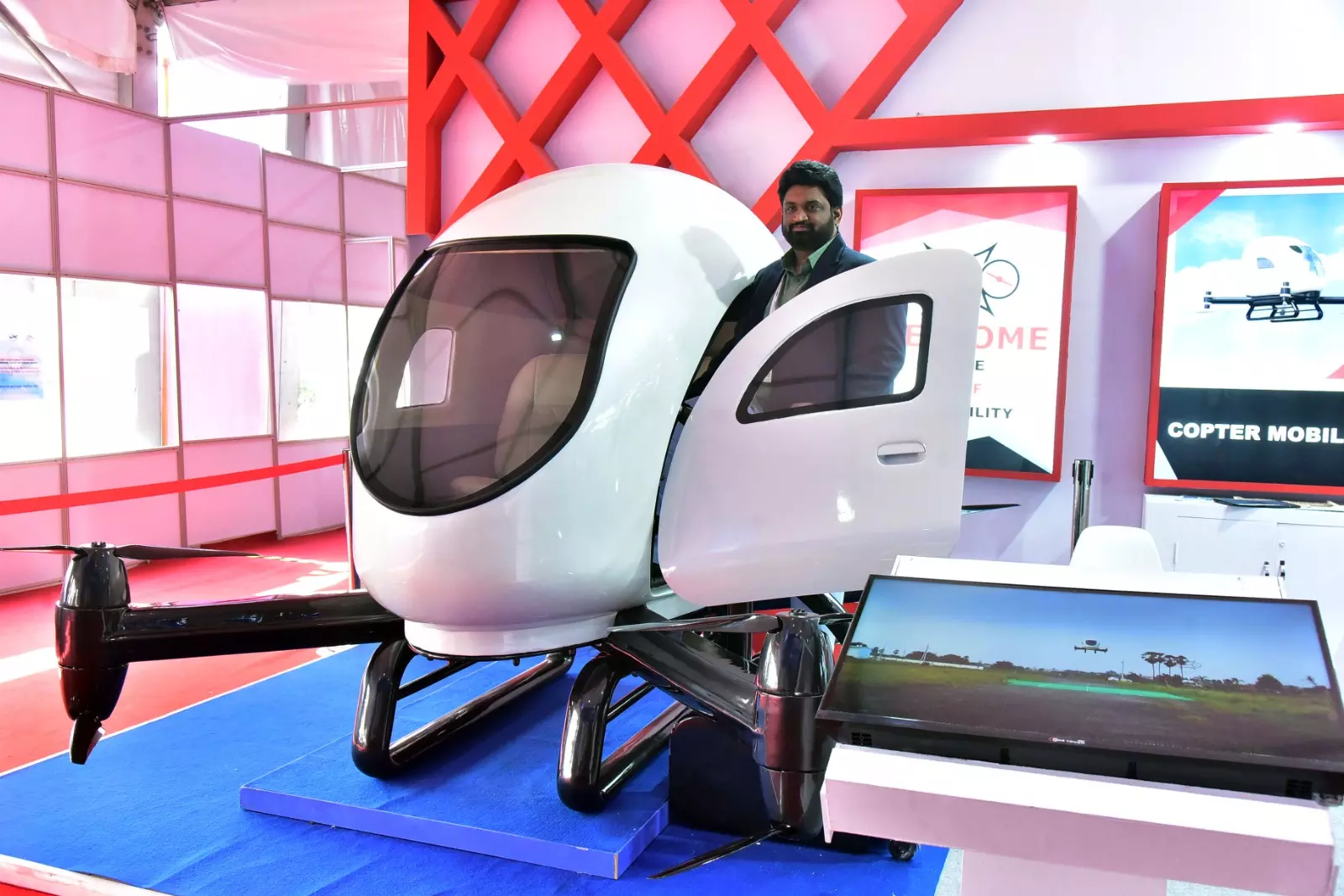Flying cars bring in new freshness to Wings India

Hyderabad: Hyderabad has been hosting the biennial civil air show for 16 years. Every time, it had almost the same exhibits — different types of aircraft and aviation-related technologies, products and services. It had become a sort of routine.
This current eighth edition of the civil aviation show — Wings India 2024 — is markedly different as it hints at the new future of the aviation industry: The battery-powered flying vehicles that are capable of taking off vertically. Welcome to the world of eVTOL or electric Vertical Take-Off Landing capable aircraft.
The theme of this air show is advanced air mobility, which includes the deployment of various types of air-borne vehicles, including eVTOLs, to deal with urban transportation issues.
These flying cars combine the hovering capabilities of a helicopter and the efficiency of fixed-wing aircraft and land and take off from roof-tops making them a more suitable mode of air travel in densely populated areas.
As it is still a niche area, only 15 companies that deal with eVTOLs participated in the air show. The participants include Hyderabad-based Marut Drones, Guntur-based NAATS Aviation, and Mohali-based Nalwa Aero among others.
Around the world, there are more than 200 eVTOL projects in different stages of design, development and testing. While most of these projects are being undertaken in western countries, India wants to hop on to the flying car revolution through collaboration and introduce them in the country as early as 2025.
Marut Drones recently tied up with Japan-based SkyDrive to jointly explore the Indian market for deployment of eVTOLs. Last year, IndiGo airline’s promoter InterGlobe signed an agreement with US-based eVTOL aircraft developer Archer Aviation to buy 200 flying cars to launch air taxis in India.
According to a study of PwC and CII, flying cars are supposed to address urban traffic congestion and high lead times for medical emergency services, last-mile deliveries, and inadequate safety and security standards at public places.
The study further claimed that advanced air mobility could also boost regional connectivity as the current aircraft are too costly to be deployed on routes which have sparse traffic.
The air taxis, which come in different passenger carrying capacities, could be used for last-mile connectivity to villages from towns following the hub-and-spoke model as they are powered by cheaper electricity as against the current aircrafts which use costly imported crude oil-based fuel.

